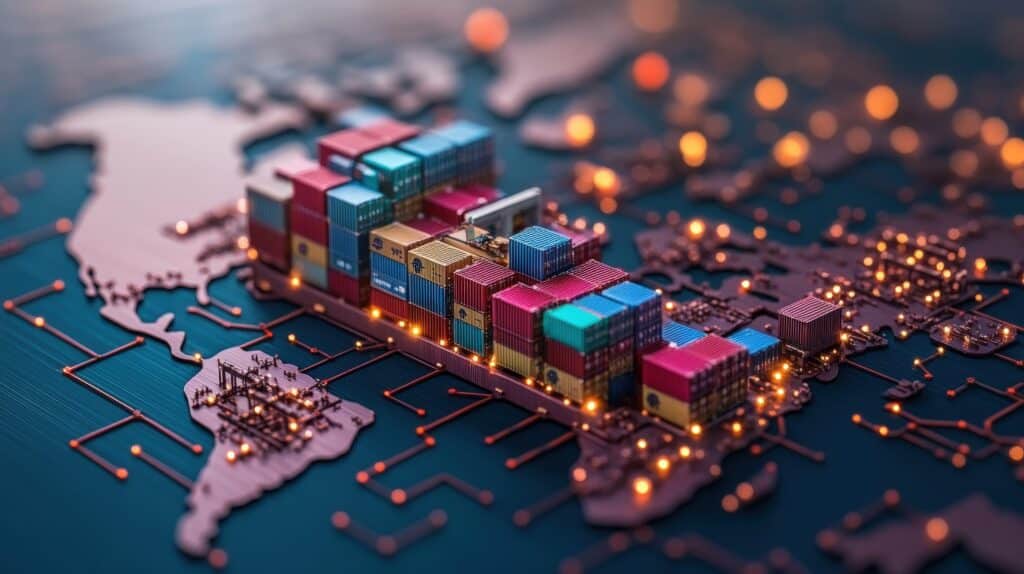What can the international market do to address Chinese technological innovation? – Polytechnique Insights

Report on the Shifting Global Economic Landscape and its Implications for Sustainable Development Goals
Introduction: Geopolitics and the 2030 Agenda
The global economic order is undergoing a fundamental transformation, moving from an era of market-driven globalization to one shaped by geopolitical competition. China’s evolution from a low-cost manufacturing hub to a technological leader in sectors such as artificial intelligence and electric vehicles has prompted Western nations to reassess their economic strategies. These policy responses, often mischaracterized as simple “decoupling,” have profound implications for the achievement of the United Nations Sustainable Development Goals (SDGs). This report analyzes the three primary Western strategies—techno-nationalism, techno-localism, and protectionism—through the lens of their impact on key SDGs, including SDG 8 (Decent Work and Economic Growth), SDG 9 (Industry, Innovation, and Infrastructure), and SDG 17 (Partnerships for the Goals).
Analysis of Western Policy Frameworks and SDG Impacts
Techno-nationalism: A Challenge to SDG 9 and SDG 17
Techno-nationalism involves the exclusion of foreign companies from critical technology ecosystems on national security grounds, prioritizing security over economic efficiency and global collaboration. This approach directly challenges the principles of international cooperation inherent in the 2030 Agenda.
- Impact on SDG 9 (Industry, Innovation, and Infrastructure): By restricting access to technology and fragmenting global innovation networks, such as the comprehensive sanctions against Huawei and over 600 other Chinese firms, techno-nationalism can stifle the cross-border collaboration necessary for technological advancement. Export controls on semiconductors and advanced lithography equipment hinder the development of resilient infrastructure and inclusive industrialization on a global scale.
- Impact on SDG 17 (Partnerships for the Goals): This strategy fundamentally undermines global partnerships. The creation of entity lists and the exclusion of “high-risk vendors” from critical infrastructure like 5G networks represent a move away from the collaborative spirit required to address global challenges.
For stakeholders, these policies necessitate proactive risk assessments and the development of resilient supply chains to mitigate disruptions that could impede progress on sustainability targets.
Techno-localism: Realigning Industrial Policy with SDG 8 and SDG 12
Techno-localism permits market access for foreign firms on the condition that they establish a significant local presence, often involving technology transfer. This strategy attempts to harness foreign innovation to advance national sustainable development objectives.
- Advancing SDG 8 (Decent Work and Economic Growth): By requiring Chinese battery giants like CATL and BYD to establish manufacturing facilities in Europe to access subsidies, techno-localism aims to create domestic jobs and foster local economic growth in the green technology sector.
- Supporting SDG 9 (Industry, Innovation, and Infrastructure): This approach seeks to build domestic industrial capacity and control over critical supply chains, particularly in the transition to electric mobility. The requirement for TikTok to divest its U.S. operations is framed as a measure to retain control over valuable data infrastructure and algorithms.
- Promoting SDG 12 (Responsible Consumption and Production): Localizing production of key components, such as EV batteries, can shorten supply chains and provide greater oversight of production standards, contributing to more sustainable consumption and production patterns.
However, this strategy risks disincentivizing innovation in open partnerships, potentially limiting access to cutting-edge technologies required for long-term sustainable development.
Protectionism: Reshoring Production for SDG 7 and SDG 8
The third strategy, protectionism, utilizes tariffs, subsidies, and procurement preferences to shield domestic industries, focusing on the geography of production rather than corporate ownership. These measures are designed to rebuild domestic industrial capacity, particularly in sectors critical to the green transition.
- Impact on SDG 7 (Affordable and Clean Energy) and SDG 12 (Responsible Consumption and Production): Policies like the U.S. Inflation Reduction Act and the EU’s Green Deal Industrial Plan provide substantial incentives for domestic manufacturing of clean energy technologies, including solar panels and electric vehicles. The 100% tariff on Chinese-built EVs is an explicit attempt to foster a domestic EV industry.
- Impact on SDG 8 (Decent Work and Economic Growth): The CHIPS Act and “Buy American” provisions are intended to create high-quality domestic jobs and ensure economic benefits from industrial investment are localized.
The effectiveness of these policies can be limited, as companies may circumvent trade barriers through foreign direct investment or third-country manufacturing. For instance, Chinese firms have established U.S. production facilities to qualify for subsidies, demonstrating that protectionist measures may not fully achieve their goal of decoupling ownership from production.
Navigating the New Landscape for Sustainable Progress
Strategic Imperatives for a Fragmented World
The era of frictionless, market-driven globalization is being replaced by a system where geopolitical considerations are paramount. This new reality demands that business leaders and policymakers align their strategies not only with shifting trade dynamics but also with the overarching goals of the 2030 Agenda. Success in this fragmented world requires mastering a new set of rules where sustainable development and geopolitical strategy are increasingly intertwined.
Key considerations for stakeholders include:
- Integrating Geopolitical Risk and SDG Commitments: Companies must conduct integrated risk assessments that evaluate how geopolitical shifts in specific sectors impact their ability to meet sustainability targets.
- Building Resilient and Sustainable Supply Chains: The focus must shift towards developing diversified and resilient supply chains that support responsible production and consumption patterns, in line with SDG 12.
- Advocating for Balanced Policies: Stakeholders should advocate for policy frameworks that balance national industrial and security interests with the imperative for global cooperation (SDG 17) needed to solve shared challenges like climate change and technological disruption.
Analysis of Sustainable Development Goals in the Article
1. Which SDGs are addressed or connected to the issues highlighted in the article?
The article highlights several issues related to international trade, technological competition, and industrial policy that connect to multiple Sustainable Development Goals (SDGs). The most relevant SDGs are:
- SDG 9: Industry, Innovation and Infrastructure: This is the most central SDG in the article. The text revolves around the technological race in artificial intelligence, electric vehicles, and semiconductors. It discusses national strategies to build domestic industrial capacity, protect critical infrastructure (like 5G networks), and control the flow of innovation and technology.
- SDG 8: Decent Work and Economic Growth: The article frames the geopolitical tensions as a struggle for “economic leadership” and discusses policies aimed at protecting and rebuilding domestic industries. Measures like the Inflation Reduction Act and the CHIPS Act are designed to stimulate domestic manufacturing, which directly relates to economic growth and employment.
- SDG 7: Affordable and Clean Energy: The article specifically mentions key components of the clean energy transition, including “electric vehicle sales,” “solar panels,” and clean energy incentives like the “$369bn in clean energy incentives” from the Inflation Reduction Act. The competition and protectionism in these sectors are directly relevant to achieving clean energy goals.
- SDG 17: Partnerships for the Goals: The entire article is an analysis of the breakdown and restructuring of global partnerships. It details the shift from “market-driven globalization” to a system shaped by “geopolitical considerations.” It discusses the use of tariffs, sanctions (“entity lists”), and forced technology transfers, which are all mechanisms that define the rules of international partnerships for trade, technology, and investment.
2. What specific targets under those SDGs can be identified based on the article’s content?
Based on the article’s discussion of technology, industry, and trade policies, several specific SDG targets can be identified:
-
Under SDG 9 (Industry, Innovation and Infrastructure):
- Target 9.2: Promote inclusive and sustainable industrialization. The article discusses Western policies like the CHIPS Act and the Inflation Reduction Act, which are explicit attempts to “rebuild domestic industrial capacity” in sectors like semiconductors and clean technology, directly aligning with the goal of promoting industrialization.
- Target 9.5: Enhance scientific research, upgrade the technological capabilities of industrial sectors. The narrative of a technological race between China and the West in AI, 5G, and advanced manufacturing is central. Policies like export controls on semiconductor equipment and China’s investment of “billions in domestic semiconductor capabilities” are actions directly related to controlling and upgrading technological capabilities.
- Target 9.b: Support domestic technology development, research and innovation. The article describes how Western governments are using “techno-localism” to force technology sharing and build domestic capabilities. This mirrors China’s past strategies and is a direct, albeit geopolitically motivated, implementation of this target.
-
Under SDG 8 (Decent Work and Economic Growth):
- Target 8.2: Achieve higher levels of economic productivity through diversification, technological upgrading and innovation. The article highlights the Western focus on “critical technology ecosystems” such as “artificial intelligence, biotechnology, and advanced manufacturing” as the foundation for future economic leadership and productivity.
-
Under SDG 7 (Affordable and Clean Energy):
- Target 7.a: Enhance international cooperation to facilitate access to clean energy research and technology. The article illustrates the challenges to this target. Policies like the “100% tariff on Chinese-built electric vehicles” and subsidies for domestic clean tech manufacturing under the EU’s “Green Deal Industrial Plan” show a trend towards competition rather than cooperation in clean energy technology.
-
Under SDG 17 (Partnerships for the Goals):
- Target 17.11: Significantly increase the exports of developing countries. The protectionist policies described, such as tariffs on “Chinese solar panels, semiconductors, steel, and aluminum,” directly counteract this target by creating significant trade barriers.
- Target 17.13: Enhance global macroeconomic stability, including through policy coordination. The article describes the opposite: a “fragmented global economy” and a “complex web of policies” that lack coordination, leading to instability in global supply chains and investment environments.
3. Are there any indicators mentioned or implied in the article that can be used to measure progress towards the identified targets?
The article provides several quantitative and qualitative indicators that can be used to measure the dynamics related to the identified targets:
- Market Share Statistics: The article uses market share as a key indicator of industrial and economic power. For example, it states that due to US restrictions, “Huawei’s global smartphone market share collapsed from 20% to barely 2% within two years.” This is a direct measure of a company’s competitiveness in the global market (related to SDG 8 and 9).
- Trade Tariffs and Duties: Specific protectionist measures are cited, such as the “100% tariff on Chinese-built electric vehicles.” The level and scope of tariffs are direct indicators of trade barriers, relevant to measuring progress (or lack thereof) towards SDG Target 17.11.
- Government Investment and Subsidies: The article mentions specific financial commitments, such as the Inflation Reduction Act providing “$369bn in clean energy incentives” and the CHIPS Act allocating “$52bn for semiconductor manufacturing.” These figures are indicators of government investment in domestic industry and technology (related to SDG 9).
- Number of Sanctioned Entities: The fact that the “U.S. Bureau of Industry and Security now maintains entity lists with over 600 Chinese companies banned from receiving American technology” serves as a quantifiable indicator of the breakdown in technological and economic partnerships (related to SDG 17).
- Domestic Content Requirements: Policies that include “domestic content requirements that favour American manufacturers” are a qualitative, yet measurable, indicator of protectionism and efforts to localize supply chains (related to SDG 9 and 17).
4. Summary Table of SDGs, Targets, and Indicators
| SDGs | Targets | Indicators Identified in the Article |
|---|---|---|
| SDG 9: Industry, Innovation and Infrastructure | 9.2: Promote sustainable industrialization. 9.5: Enhance research and upgrade technological capabilities. |
– Financial allocations for domestic manufacturing (e.g., “$52bn for semiconductor manufacturing” via CHIPS Act). – Investment in domestic R&D (e.g., China’s “billions in domestic semiconductor capabilities”). |
| SDG 8: Decent Work and Economic Growth | 8.2: Achieve higher levels of economic productivity through technological upgrading and innovation. | – Change in global market share for key technology products (e.g., Huawei’s smartphone market share dropping from 20% to 2%). |
| SDG 7: Affordable and Clean Energy | 7.a: Enhance international cooperation and investment in clean energy technology. | – Level of government subsidies for clean energy (e.g., “$369bn in clean energy incentives” via IRA). – Tariffs on clean energy products (e.g., duties on Chinese solar panels). |
| SDG 17: Partnerships for the Goals | 17.11: Increase exports of developing countries. 17.13: Enhance global macroeconomic stability and policy coordination. |
– Specific tariff rates (e.g., “100% tariff on Chinese-built electric vehicles”). – Number of companies on trade restriction lists (e.g., “over 600 Chinese companies” on U.S. entity lists). |
Source: polytechnique-insights.com
What is Your Reaction?
 Like
0
Like
0
 Dislike
0
Dislike
0
 Love
0
Love
0
 Funny
0
Funny
0
 Angry
0
Angry
0
 Sad
0
Sad
0
 Wow
0
Wow
0















































/environment-climate-change-and-health-(ech)/water-sanitation-hygiene-and-health-(wsh)/landfill-tuvalu-36092.tmb-1200v.jpg?sfvrsn=5c21fe40_1#)


.jpg.webp?itok=0ZsAnae9#)

























